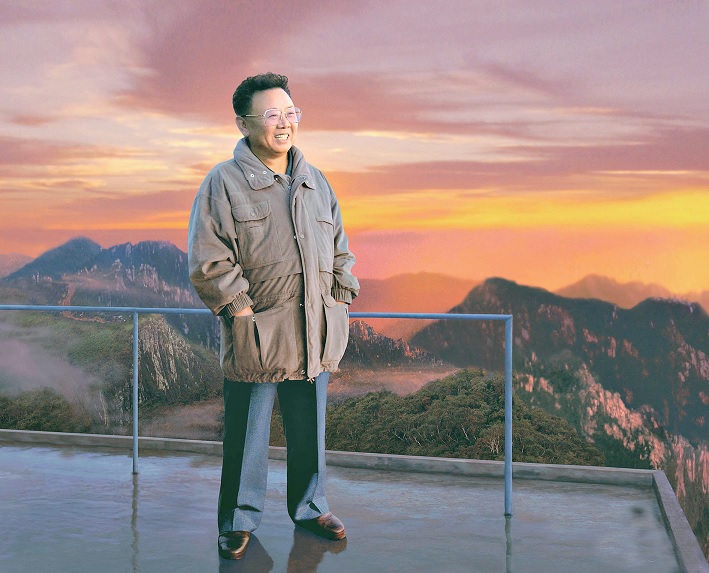長年無休
長年無休
Without a Day’s Rest
Kim Jong Il worked without a day’s rest.
A way of thinking different to the general logic that a man should relieve his fatigue so as to go on working put a brake on his taking rest. In other words, he thought that if he took a rest, the development of his country would be delayed as much. His daily schedule started at dawn and finished at the dawn of the next day, and the realm of his activities comprised all the places where the people live including factories and farms, and educational and scientific research institutes. So he was always short of time.
His birthday was no exception. On one of his birthdays, he had national-level celebrations canceled for the convenience of the Pyongyang citizens, and he himself worked all day long in a region far off from the capital city.
He regarded achieving the people’s well-being as his highest duty.
After his death, the Korean people felt a guilty conscience for failing to provide him with even a moment of rest. Seeing them, the world’s people got a fresh understanding of the leader of the DPRK, who worked for the people’s well-being without a moment of rest throughout his political career.

Letters
It is widely known how many letters Lenin wrote in his lifetime. But it is not well-known how many letters Kim Jong Il received in his lifetime.
One month he received thousands of letters. All the Korean people, irrespective of age, occupation and social standing, wrote to him; they unbosomed their dreams, wishes and worries, which they dared not say to others.
It was usually at dawn when he read the letters; after the fatiguing work in daytime, he would experience the feeling of a leader followed by his people and their simple mind when they all fell into a deep sleep; he then wrote short replies that reflected his mind.
Those who received his replies regard them as the most precious treasure for them.
Blouson and Parka
A famous man once said that nothing is more dangerous than a meaningless fashion.
Despite the ever-changing dress fashion in the world, Kim Jong Il did not confine himself to the diplomatic convention due to a head of state; he wore simple and plain clothes–blouson and parka.
The world focused its attention on his unusual taste for clothes for a long time. Only after he died could people get an answer.
He put on the blouson with a determination to devote himself to the people’s well-being in a combat uniform in the place of Kim Il Sung who was continuing his field guidance even in his advanced age. After the demise of Kim Il Sung he put on the parka with a do-or-die spirit for over 10 years filled with trials.
He once said: Blouson complies with my temperament; whoever says what, I love my liking, my hobby and my taste.
It can be said that the clothes well suit his political career in which he had to get through the arduous days.
The blouson and parka are still handed down along with his beaming image, telling of his tireless efforts and immortal exploits.

Source: Consulate General of the Democratic People's Republic of Korea





